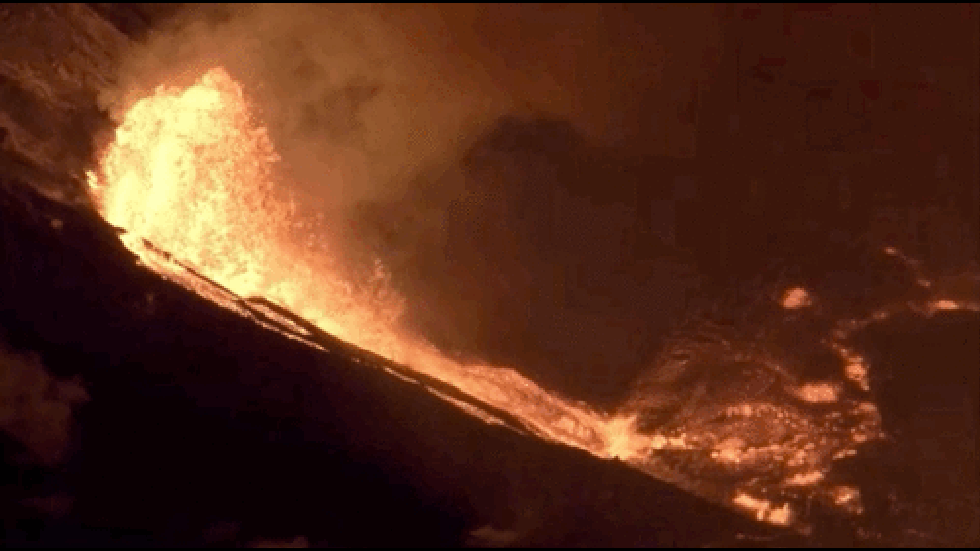Ron Brackett
A lava lake that formed in a crater at the summit of Hawaii's Kīlauea Volcano during an eruption Sunday now covers about 33 acres, according to scientists.
The growing lava lake is now about 1,900 feet by 1,050 feet, USGS Volcanoes tweeted early Tuesday.
Earlier, the group said two fissure vents were feeding lava into the lake in the 1,640-foot-deep Halemaʻumaʻu crater in the caldera at the top of Kīlauea.
The eruption happened about 9:30 p.m. Sunday Hawaii Standard Time. Lava from the eruption boiled off the water in the crater lake and formed the new lava lake, USGS Volcanoes said.
The eruption blasted a cloud of steam and ash into the atmosphere for about an hour.
(WATCH: The Jaw-Dropping Satellite Images That Will Define 2020)
A plume continues to drift to the southwest, and increased sulfur dioxide in the air may lead to voggy — volcano smog — conditions downwind, according to USGS Volcanoes.
Lava was isolated within the volcano's caldera. Lava fountains up to 164 feet high were observed after the initial eruption.
 This animation shows lava erupting from Kīlauea Volcano on Sunday, December 20, 2020, in Hawaii.
This animation shows lava erupting from Kīlauea Volcano on Sunday, December 20, 2020, in Hawaii.A magnitude 4.4 earthquake also occurred shortly after the eruption began. The earthquake was felt on the Big Island of Hawaii, but no significant damage was reported, according to the Associated Press.
USGS Volcanoes tweeted that about 11:20 a.m. Monday local time, two of the three fissures that opened in the eruption were still active and feeding lava into the new lava lake in Halema’uma’u crater.
The water that had been in the Halema’uma’u was the first ever recorded in the summit crater of Kīlauea.
The presence of water was confirmed in 2019. The lake had continued to fill with water since then.
(MORE: 2020's Worst Environmental Disasters, and How Climate Change Played a Role)
The last major eruption of Kīlauea was in June 2018, and it destroyed more than 700 homes. Lava flowed for more than four months and covered an area more than half the size of Manhattan 80 feet deep, the AP reported.
Hawaiian Volcano Observatory scientists for the past few weeks had recorded ground deformation and earthquake rates greater than those observed since the end of the 2018 eruption, the Honolulu Star-Advertiser reported.
About 8:30 Sunday night, an earthquake swarm and ground deformation began beneath the summit. An hour later, the lava fissures were seen.
The Weather Company’s primary journalistic mission is to report on breaking weather news, the environment and the importance of science to our lives. This story does not necessarily represent the position of our parent company, IBM.
The Weather Company’s primary journalistic mission is to report on breaking weather news, the environment and the importance of science to our lives. This story does not necessarily represent the position of our parent company, IBM.

No comments:
Post a Comment